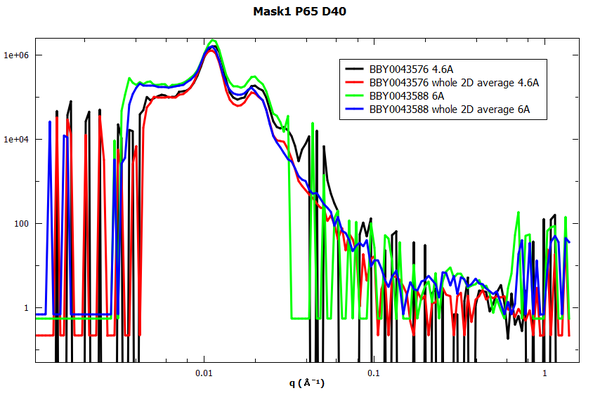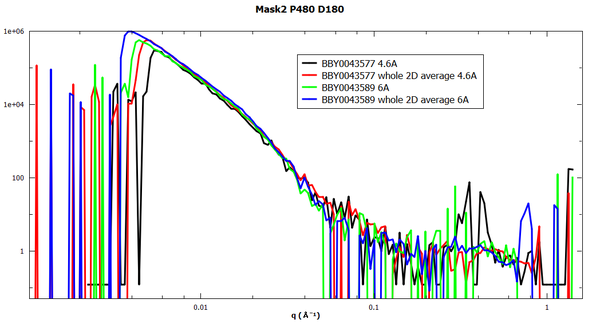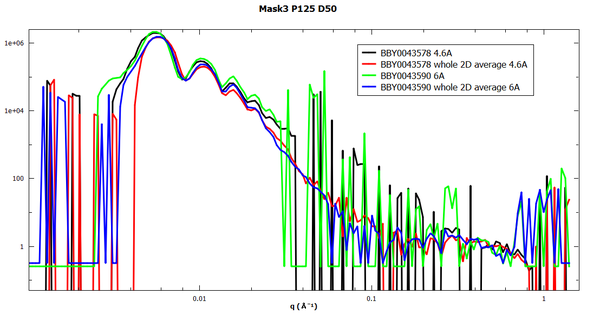Al Ceramics
Experimental set-up
Scattering from three samples have been collected in ToF mode at two resolutions (the hope was to check how many peaks we can resolve, comparing to SAXS (see Alumina_seramics_SAXS.PDF) and then and combined ToF + monochromatic mode using two wavelengths.
Samples have been purchased from http://www.smartmembranes.de.
Mask1: Alumina membrane P65 D40
Mask2: Alumina membrane P480 D180
Mask3: Alumina membrane P125 D50
Each measurement took about 15min. Data are reduced either on a narrow sector, or 2D averaged. Mask1 suffers from multiple scattering even for 4.6A and 6A., Mask3 is ok for this wavelength range.
Pdf file with details showing multiple scattering, sample misalignment and hence anisotropy effects are in the file sokolova_ceramic_masks_summary.pdf.
Experimental data: example
The three graphs below are examples of non-matching scattering averaged in a slice of ~40deg width and the whole 2D averaged data for two different wavelengths. 4.6A is the shortest available wavelength on Bilby velocity selector (there is no option to rotate it, due to spatial constraints). One can see there is no repeatability in this data. Alignment of pores inside the samples and massive multiple scattering is assumed to be the reasons.
It is obvious that these masks cannot be used as a standard for SANS measurements. The samples' thickness is very small (<0.5mm), samples are very brittle, it seems not feasible to try to adjust their shape.


